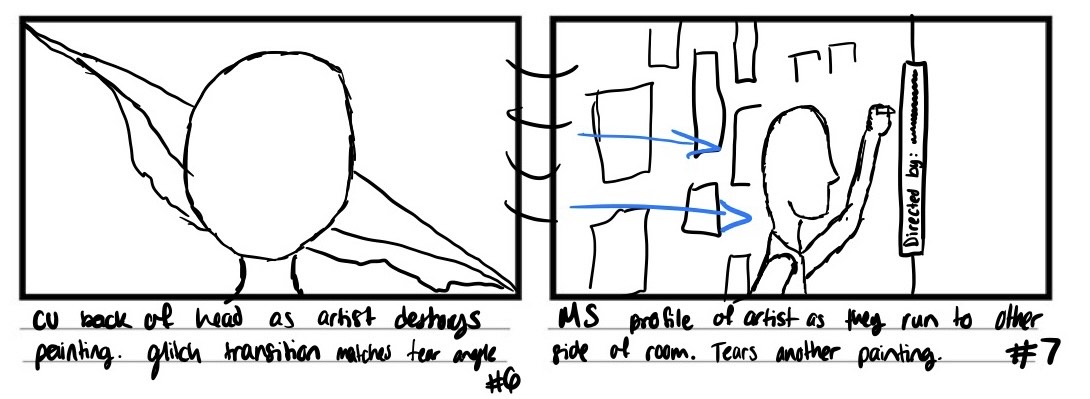I’ll admit, I don’t typically like scheduling. I'm the type of person that once I flesh out the idea, I want to jump right in. However I see the importance of scheduling and given the situation Tai and I are in, I decided to actually look at a calendar. At first, I was intimidated. Looking at the quantified number of days we have left to finish the opening sparked some unwelcomed anxieties. Questions about how early we can film, how much time we have to edit, and whether or not we'll even be able to get together for production began to plague my mind. So I started with the most recent.
During my economics class (this time I finished the classwork) I spent a good 40 minutes finishing the storyboard, labeling shots, setting up the goals of filming days, and setting up an shot list order. The storyboard helped to put into perspective how many shots we truly need for the opening (we only need 25). This not only makes the filming process feel more manageable, it will also help us in editing, knowing exactly how many video clips we need in the timeline and exactly where each clip will go.
I labeled every shot in the storyboard with both a description and a number. The description should help with communication on set as well as with remembering the point of each shot. During the music video project, production was slightly disorganized and part of the reason why was because the storyboard was hard to interpret by the rest of my team. I created it so I understood it pretty well, but that wasn't the case with my fellow group members. I would often get asked question about how to frame the shot, what exactly is happening in it, and what kind of movement is the camera doing. This made me realize that if i had given a shot descriptions, a lot of the issues with communication could've been avoided, and filming could've gone smoother, which is why this time I'm not taking any chances.The numbering of each shot at first was just to get an idea of how many shots there were in total. Since I would draw the same shot back to back, I needed a way to destinguish between frames that describes actions, and frames that described cuts. However, while organizing the order of shots list, the numbers ended up being a really easy way to organize each clip without having to write the full description. This will definitely help in organizing the way we film, especially if multiple shots can be done with the same setup. The filming schedule is also extremely helpful because it give us a good idea of the goals we need to accomplish for each day of filming, as well as gives us an idea of how long each day will last. It also helps since we have a friend of ours acting so scheduling with him will be easier since we can give him the full scope of what we're doing, from which days and times we'll need him and what he'll be doing throughout the opening.
 |
| I've checked out from BECON-TV before |
Next week, we can finish props, I can make the fake blood, we can find the clothing each character each character will wear, and we can secure the actors. The week before we leave for STN (Student Television Network competition for our TV program at school) We can check out equipment from BECON-TV a wonderful resource for all things production (they have everything from cameras, tripods, and array of lighting equipment, and even props).
 |
| The full schedule |





No comments:
Post a Comment